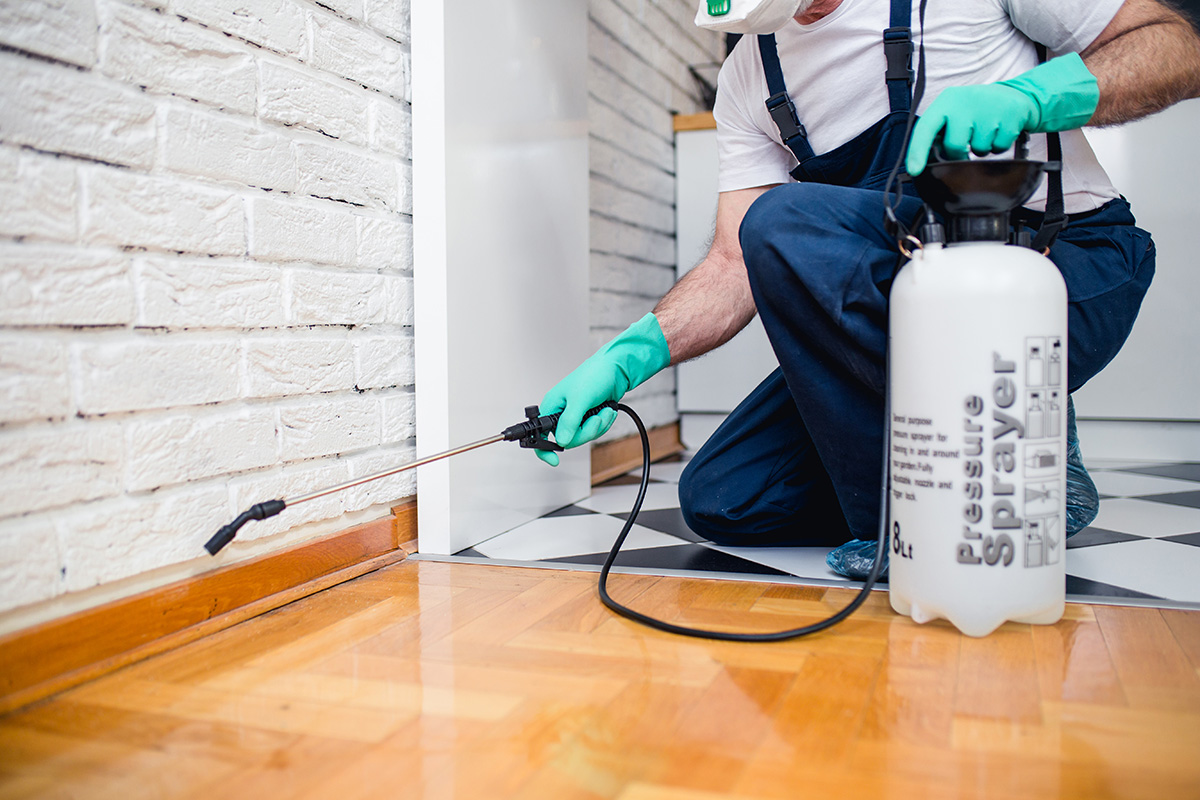A1 Pest Control Charlotte NC Bed Bugs - Expert Elimination Services
Bed Insect Treatment Failure: Comparing Chemical Vs. Non-Chemical Solutions
In the realm of insect control, specifically when dealing with the relentless problem of bed insects, the option between chemical and non-chemical therapy remedies can be a pivotal one. Both approaches provide unique advantages and disadvantages, affecting aspects such as effectiveness, safety considerations, and general expense. By analyzing the nuanced details of each approach, a more clear understanding of which course to pursue in addressing a bed insect invasion can be acquired.
Performance of Chemical Treatments
Chemical treatments for bed bug invasions have been commonly acknowledged for their powerful and rapid effectiveness in getting rid of these parasites. When considering the performance of chemical treatments, it is critical to recognize that they can supply a extensive and quick service to a bed pest trouble. Expert pest control experts frequently rely upon pesticides to target bed pests at various stages of their life cycle, including adults, fairies, and eggs. These chemicals usually function by interrupting the bed pests' nerve system, causing paralysis and ultimate death.
Furthermore, chemical treatments have the advantage of providing recurring effects, suggesting that they can remain to remove bed pests also after the initial application. This recurring activity is particularly beneficial in combating any type of prospective re-infestations. Furthermore, the fast action of chemical therapies can bring relief to individuals facing extreme bed pest infestations, enabling them to gain back control of their living spaces quickly.
Security Problems With Chemical Solutions
One important aspect that needs careful consideration when making use of chemical options for bed pest treatment is making certain the security of owners and the atmosphere. Direct exposure to certain chemicals utilized in bed pest therapies can lead to respiratory system issues, skin irritation, or other unfavorable reactions, specifically in people with pre-existing problems or level of sensitivities.
In addition, the ecological impact of chemical services is one more significant consideration. Some pesticides utilized in bed pest therapies may be unsafe to useful bugs, wild animals, and communities if they leach right into the dirt or water systems. It is necessary to utilize chemical treatments sensibly, complying with security guidelines, and thinking about much less hazardous options to minimize these dangers and guarantee the safe and efficient monitoring of bed insect invasions.
Benefits of Non-Chemical Approaches
Taking into consideration the possible security issues and environmental influence linked with chemical remedies for bed pest therapy, checking out non-chemical approaches provides an encouraging option with a number of unique advantages. Non-chemical techniques supply a much safer option for houses, specifically those with individuals, kids, or pet dogs conscious extreme chemicals. These methods eliminate the i thought about this risks of direct exposure to harmful substances, minimizing the capacity for adverse wellness impacts. Furthermore, non-chemical therapies are eco-friendly, as they do not contribute to air or water contamination, making them a sustainable choice for insect control.
In addition, non-chemical services can be effective in targeting bed insects, including hard-to-reach locations where chemical therapies may not pass through - A1 bed bug treatment in charlotte. Methods such as warmth treatment, vacuuming, vapor cleaning, and cushion encasements supply extensive removal without the usage of damaging chemicals.
Limitations of Non-Chemical Treatments

Additionally, non-chemical therapies commonly call for multiple applications to accomplish successful removal. This can be lengthy and may not constantly assure full elimination of all bed bugs and their eggs, particularly in hard-to-reach or surprise locations.
Furthermore, the success of non-chemical treatments heavily counts on proper execution and thoroughness, which can be challenging for individuals without specialist proficiency. Inadequate application of non-chemical methods may cause incomplete elimination, resulting in consistent infestations and the need for added treatments.
Consequently, while non-chemical treatments have their benefits, it is important to recognize these constraints and consider them when figuring out the most effective method for taking care of bed bug invasions.
Expense Comparison: Chemical Vs. Non-Chemical Options
Given the limitations connected with non-chemical treatments, a crucial facet to evaluate in the context of bed insect monitoring is the price comparison in between chemical and non-chemical choices. Chemical therapies generally involve the application of pesticides by specialists, which can vary from $250 to $900 per space, depending on the seriousness of the invasion and the size of the area to be dealt with. In comparison, non-chemical therapies like warm treatment or vapor can be much more costly, with costs ranging from $1,000 to $6,000 for an entire home. While the preliminary price of chemical treatments may seem lower, that site several therapies may be called for to totally eliminate the problem, potentially raising the overall cost. On the various other hand, non-chemical alternatives might offer an extra environmentally friendly and lasting solution, although they can be cost-prohibitive for some individuals. Inevitably, when thinking about the expense of bed insect therapy alternatives, it is essential to evaluate the upfront costs against the efficiency and long-lasting sustainability of the selected method.
Final Thought

Considering the possible security concerns websites and ecological impact connected with chemical remedies for bed bug therapy, checking out non-chemical methods offers a promising choice with numerous distinct advantages.Offered the restrictions associated with non-chemical therapies, a crucial aspect to evaluate in the context of bed bug administration is the expense contrast in between chemical and non-chemical options. In comparison, non-chemical treatments like warmth therapy or steam can be extra expensive, with expenses ranging from $1,000 to $6,000 for a whole home. While the initial price of chemical treatments may appear reduced, multiple therapies may be required to fully eradicate the problem, possibly raising the overall expense.In verdict, when contrasting chemical and non-chemical bed bug treatment alternatives, it is necessary to think about efficiency, safety, benefits, restrictions, and price.